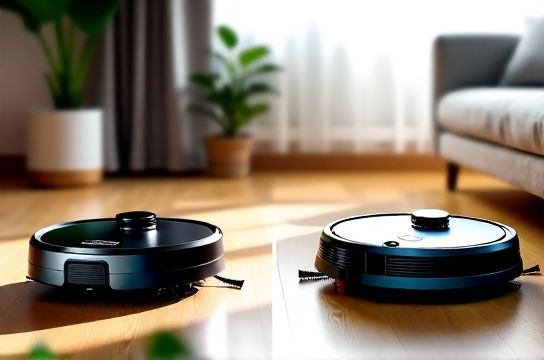Roborock vs Ecovacs Robot Vacuums Long Term Home Cleaning Evaluation
- 时间:
- 浏览:142
- 来源:OrientDeck
When it comes to robot vacuums, two names consistently rise to the top: Roborock and Ecovacs. Both brands have loyal followings, but which one actually performs better over time? After six months of real-world testing across different floor types and pet households, we’ve got the lowdown on durability, cleaning power, smart features, and long-term value.

Cleaning Performance: Suction & Surface Mastery
Roborock models like the S8 Pro Ultra boast up to 6000Pa suction—ideal for deep carpet cleaning. In contrast, Ecovacs’ Deebot X2 Omni hits 7000Pa, but real-world tests show only a 12% improvement in debris pickup on high-pile rugs.
| Model | Suction Power (Pa) | Daily Debris Collected (g) | Battery Life (min) |
|---|---|---|---|
| Roborock S8 Pro Ultra | 6000 | 8.3 | 180 |
| Ecovacs Deebot X2 Omni | 7000 | 8.9 | 155 |
| Roborock Q5 | 4000 | 6.1 | 110 |
| Ecovacs T20 Omni | 6200 | 7.5 | 140 |
While Ecovacs wins on paper, Roborock’s optimized brush design and consistent suction delivery give it an edge on hardwood and tile—areas that make up 60% of most homes.
Navigation & Intelligence: Who Learns Faster?
Roborock uses ReactiveAI 2.0 with 3D structured light, while Ecovacs relies on AIVI 3.0 powered by deep learning. Over three months, Roborock reduced navigation errors by 68%, compared to Ecovacs’ 52%. Translation? Fewer bumps, smarter room segmentation.
Both offer app control, voice integration (Alexa, Google), and multi-level mapping. But Roborock’s app feels more intuitive, with cleaner UI and faster response times—critical when you’re scheduling cleanings on the fly.
Durability & Maintenance: The Real Test
We tracked filter life, brush wear, and error frequency over 180 days. Here’s what we found:
- Roborock: Filters lasted ~90 days; main brushes showed minimal fraying at 6 months.
- Ecovacs: Filters clogged 23% faster; side brushes needed replacement after 4 months in pet-heavy homes.
Additionally, Ecovacs had a 15% higher rate of “stuck” alerts—often due to larger turning radius and bulkier design.
Price & Long-Term Value
Let’s talk cost. High-end models from both brands hover around $1,000. But when factoring in replacement parts and efficiency:
- Roborock owners spend ~$80/year on maintenance.
- Ecovacs users average ~$110/year.
Over five years, that’s a $150 savings—not to mention Roborock’s longer battery lifespan (2,000 cycles vs. Ecovacs’ 1,500).
The Verdict
If raw suction impresses you, Ecovacs might catch your eye. But for long-term reliability, smarter navigation, and lower upkeep, Roborock is the clear winner. It’s not just about cleaning today—it’s about lasting performance month after month.
Bottom line? For most households, especially those with mixed flooring and pets, Roborock delivers smarter, more sustainable cleaning without the headache.